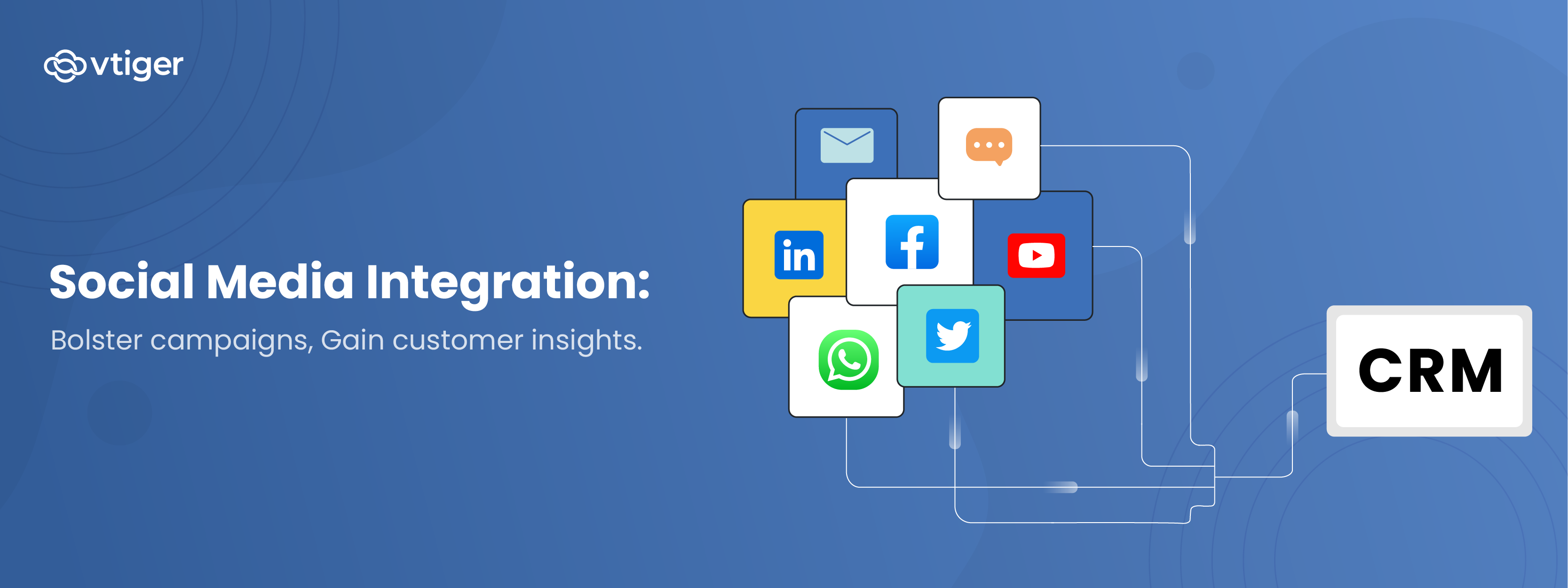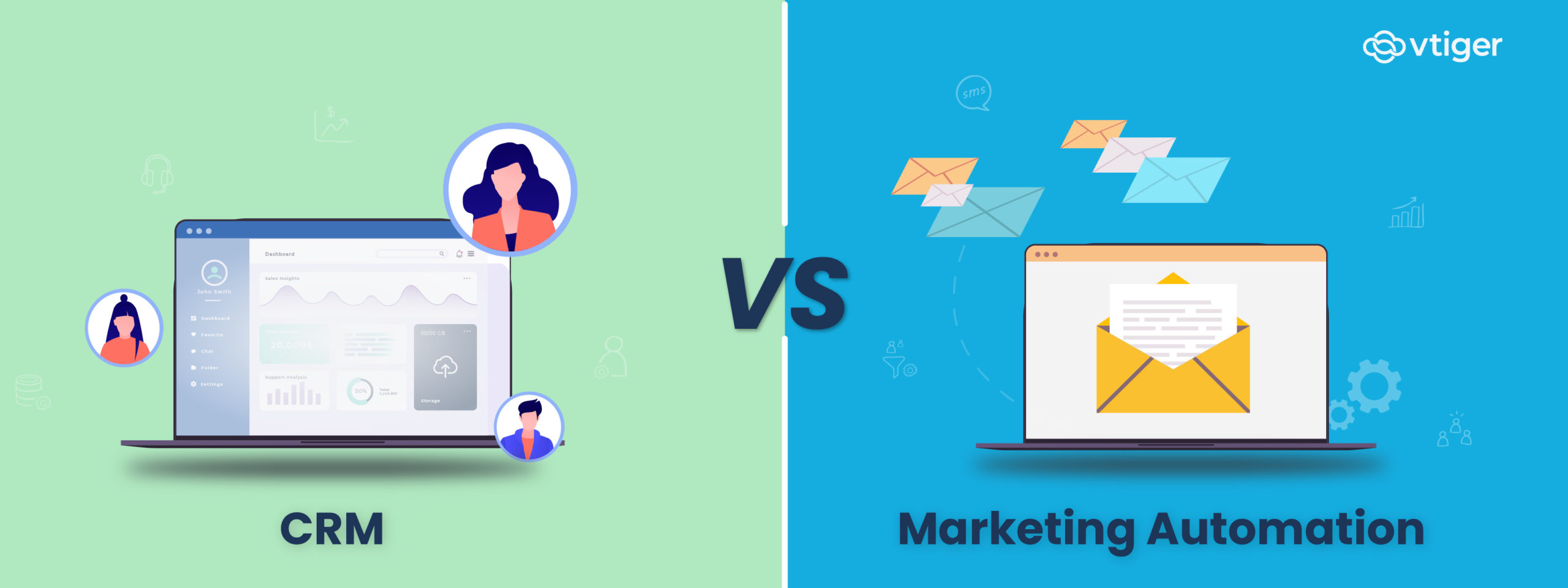Welcome back to the Cut-down Costs with CRM blog series where we will be discussing multiple dimensions of cost reduction with the help of a CRM.
In this blog, you will learn how social media integration can help you in building an effective social media strategy to streamline your marketing efforts and increase brand awareness.
Social media is no longer a medium to only connect with family and friends. According to Hootsuite, over 80 percent of companies agree that social is a vital channel for delivering exceptional customer experiences.
But do you think simply putting out content on social media can help your brand in maximizing outreach? And, how do you know if you are sharing the right message with the right audience?
If you are someone who wants to create a strong presence on social media to optimize the reach of your brand, then you need to have a well-knit social media strategy that helps you in driving traffic to your website, expand your customer base, understand customer engagement with your business, etc.
In order to achieve this, it is highly recommended to have social media integration for your business. Let us dig deeper into the following questions in the below section:
- What is social media integration
- Why it is important for your business
- How to execute a social media strategy using social media integration
What is social media integration
Social media integration for an organization is defined as using social media like Linkedin, Facebook, Twitter, etc., for branding and marketing purposes. You can use your social media accounts to attract visitors to your website, events, webinars, etc. You can promote products and services. You can also interact with customers directly through your accounts.
Two of the easiest ways to do this are:
- Integrate with a software application that helps you manage your social media accounts like a CRM.
- Add social media icons or buttons in different customer touchpoints like websites, emails, etc., which will directly take your customers to your posts or profiles.
Why social media integration is important for business
Social media integration helps you create a digital presence. You will be able to
- Build your brand online.
- Promote your products and services.
- Interact with customers.
- Build brand loyalty.
- Identify leads.
- Identify trends.
- Keep up with what your competitors are doing.
What are the benefits of the above exercises?
When you contact directly with your customers, you will be able to identify trends and market demands. You will also be able to see what your competitors are catering to. You will be able to capture data about customer preferences, demographics, market trends, etc. Analysis of this data will help you in addressing pain points and stay on top of the market trends. You can use this data to:
- Plan and execute an effective marketing strategy for the social media.
- Create relevant content for your campaigns and promotions.
- Run effective campaigns and generate leads.
- Build trust, credibility, and awareness that will help in customer retention.
How to execute a social media strategy using social media integration
It is not important to be active on all social media channels just to advertise your products and services. You should have a clear objective on why you need to be on social media, who your target audience is, what kind of content you want to share with your audience, etc.

Let us understand more about it below:
- First, you should jot down your social media goals. Your reasons to be on social media can be to drive traffic, increase business revenue, improve customer engagement, enhance brand loyalty, etc. A clear-cut goal will help you attain your objective without any buffer.
- Second, you should understand your target audience. You should try to figure out who are they, what are their likes and dislikes, on which social media platforms they mostly spend their time, etc.
- Third, you should understand the type of content you want to share. If your audience is interested in reading quality posts, you can share blogs, articles, etc. There are other social media channels that mainly focus on images, and videos like Pinterest, Instagram, Youtube, etc. Here, you can share interesting long or short videos, high-quality images, etc.
- Fourth, you should know where you want to share your content. Again, it depends on which platform your audiences are most active on. You do not have to spend your time on every medium. If your audiences spend more time on Instagram and Facebook, focus on improving your presence on these platforms.
- Fifth, you should know the best time to share your content by analyzing patterns of customer behavior. Understand when and at what time your audience interacts with you and fix a suitable day and time to put out your content.
By now you must have understood the importance of social media integration for your organization.
If you are using a CRM to conduct social media marketing, you can reap great benefits.
With the help of a CRM you can:
- Integrate all your social media channels with the CRM.
- Centralize your social media interactions from a single platform. CRM provides you with a dashboard where you can view all your social profiles. You can perform actions without switching back and forth between various profiles.
- Improve engagement by having real-time interactions. Social media integration in a CRM gives you instant alerts if someone mentions your brand in the comment section or in the message window. For example, if your customer raises a query, you will get a notification quickly and resolve their issues on time.
- Schedule your posts to be published simultaneously by setting up dates and time. CRM provides you the option to schedule posts at the right time for your target audience who are in different time zones.
- Analyze marketing trends, audience engagement level, etc., from the data. For example, you can measure if your business is on the right track from the likes, comments, mentions, etc. from the content that you share. You can generate reports of these metrics and launch campaigns accordingly.
Do you know Vtiger CRM comes with a Social Module?
You can install Social Module from the Vtiger extension store and integrate Facebook, Google My Business, Twitter, and Instagram. Vtiger Social Module allows you to plan, track, organize and manage social media activities from a single location.
The top three features of the Vtiger Social module are:
- Inbox Activity Timeline: It aligns all your posts, comments, ratings, etc., which helps you to break down content into different channels.
- Compose Messages: You can compose messages for all linked social media handles or just one. You can also provide a call-to-action in the end with multiple options like Signup or Learn More.
- Schedule a Post: You can automate the scheduling of posts by setting up dates and time as per your preference.
Click to know more about Vtiger Social Module
Take a test drive today by signing up for a 15-day free trial.
———————————————————-
Click the below links to read our blogs in this series



